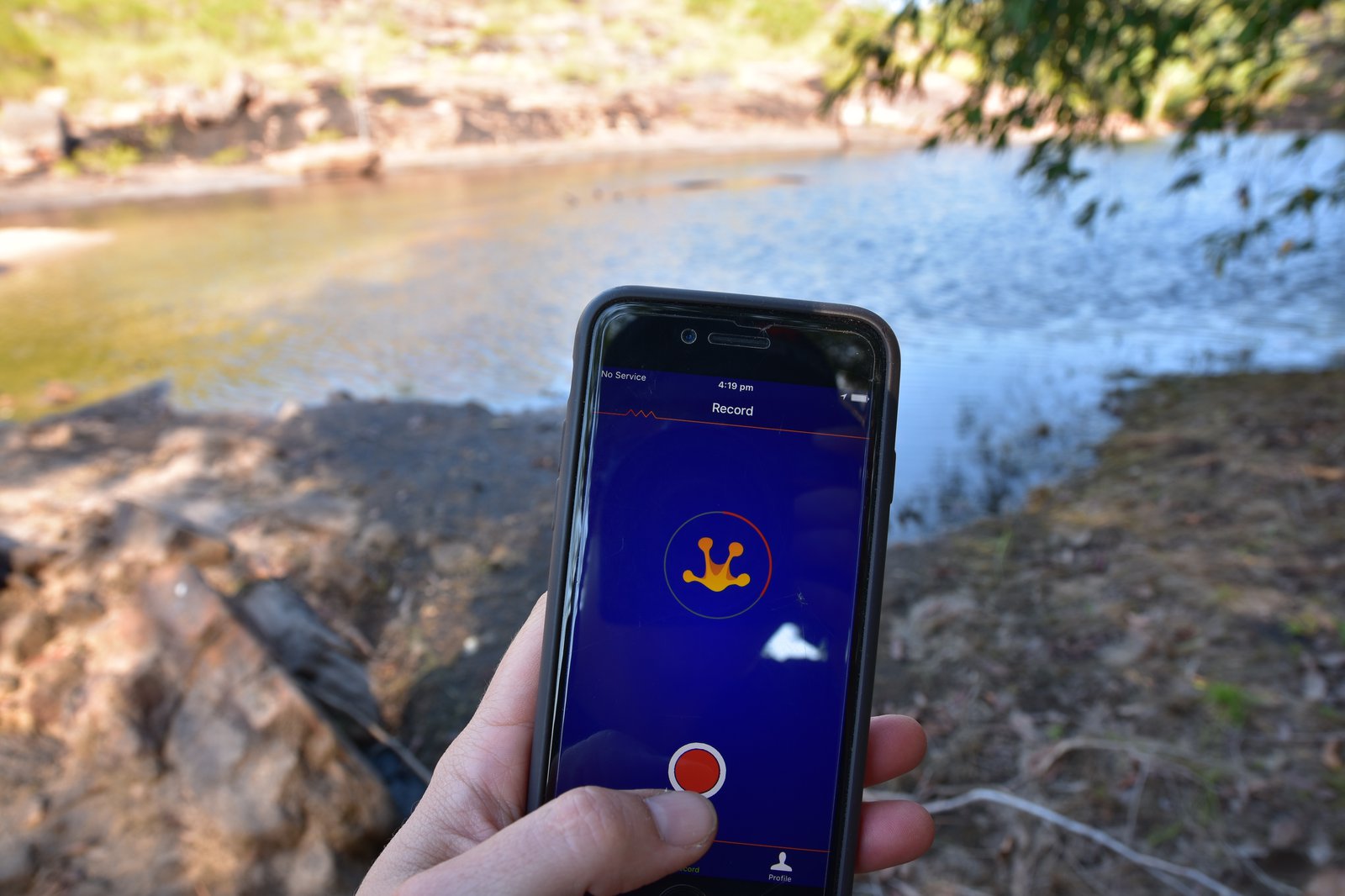Citizen scientists document frog species richness across Australia
It’s vital that we know how our biodiversity varies across time and space so that we can make informed decisions about biodiversity conservation and land-use. However, figuring out where a species occurs is often easier said than done. Recently, citizen science projects have begun gathering huge amounts of biodiversity data- but is this data as useful as that collected by professional scientists? To explore this, we used data from FrogID, an Australia-wide citizen science project. We found that FrogID data could accurately predict frog species richness across the country, which reinforces the important role that FrogID, and other citizen science projects, have in understanding and conserving our biodiversity.

Calling male Graceful Tree Frog (Litoria gracilenta), NSW.
Image: Jodi Rowley© Australian Museum
Understanding our biodiversity, even just where each species occurs, is vital in biodiversity conservation and land-use planning. But it can be really tricky to get an accurate understanding of where plants and animals occur, particularly if they are small, camouflaged, or otherwise hard to find. Take frogs in arid areas, which spend most of their time hidden, quiet and largely undetectable, only to come out after unpredictable rainfall events. Unless it’s been raining, no matter how hard you look for them, you’re unlikely to find any frogs! Australia is also huge, and there’s simply not enough field biologists out there to survey all our biodiversity. Because of this, we lack recent biodiversity data for much of Australia (and the world!).

Surveying biodiversity can be like searching for a needle in a haystack. Dr Jodi Rowley in search of the Peppered Tree Frog (Litoria piperata), NSW.
Image: Jodi Rowley© Australian Museum
Citizen science projects- public participation in professional science - are now producing large amounts of data on biodiversity. But questions have been raised about how well this data stacks up against more traditional data collected largely by scientists?
We used data from FrogID, a national citizen science project led by the Australian Museum, to explore this question. Just how would this data, collected by thousands of people across Australia, compare to our frog species richness as currently understood? FrogID data is collected via a free smartphone app. Participants use the app to record 20–60 s audio recordings of calling frogs, and the app adds associated metadata (time, date, latitude, longitude, and an estimate of precision of geographic location) to each submission at the time of recording. Each submission is listened to and the frog species calling are identified by FrogID validators (scientists with expertise in frog species identification via advertisement calls).
We compared ~90,000 records of frog species collected by FrogID users in the first ~18 months of the project to maps of frog species distributions produced using records collected over the last ~240 years, largely by scientists. We found that both methods produced highly correlated estimates of species richness – the number of frog species in an area. In other words, FrogID data was already doing a good job at understanding frog species richness!

The FrogID app.
Image: Jodi Rowley© Australian Museum
However, just how similar they were depended on how many submissions were received from an area, and an average of 153 FrogID submissions per ~55 km2 grid cell were needed to detect all the frog species that more traditional methods estimated were there. This number of surveys is relatively easy to achieve in urban areas, with more people to survey frogs, but is likely to be more difficult in remote areas.
We found that FrogID data is able to accurately predict frog species richness across Australia in just 18 months- supporting an increasing amount of data showing that citizen science data can perform as well as professionally collected data. Professional scientists and scientific research remain more important than ever, but we can’t possibly gather all the information we need to understand our biodiversity alone. It’s never been more important to get a handle on the biodiversity around us and how it is responding to a changing planet- so get out there and record a calling frog tonight!
Dr Jodi Rowley & Corey Callaghan
Australian Museum Research Institute & UNSW Sydney

Northern Spadefoot (Notaden melanoscaphus).
Image: Jodi Rowley© Jodi Rowley
More information
- Callaghan, C.T., Roberts, J.D., Poore, A.G.B., Alford, R.A., Cogger, H., Rowley, J.J.L. (2020). Citizen science data accurately predicts expert-derived species richness at a continental scale when sampling thresholds are met. Biodiversity and Conservation. https://doi.org/10.1007/s10531-020-01937-3
- Rowley, J.J.L., Callaghan, C.T., Cutajar, T., Portway, C., Potter K., Mahony, S, Trembath, D.F., Flemons, P. & Woods, A. (2019). FrogID: Citizen scientists provide validated biodiversity data on frogs of Australia. Herpetological Conservation and Biology 14(1): 155-170.
Acknowledgements
We thank the > 8000 FrogID citizen science contributors who are continuously sampling frogs and sending in their submissions. We also thank the entire FrogID team at the Australian Museum, and FrogID partners.

